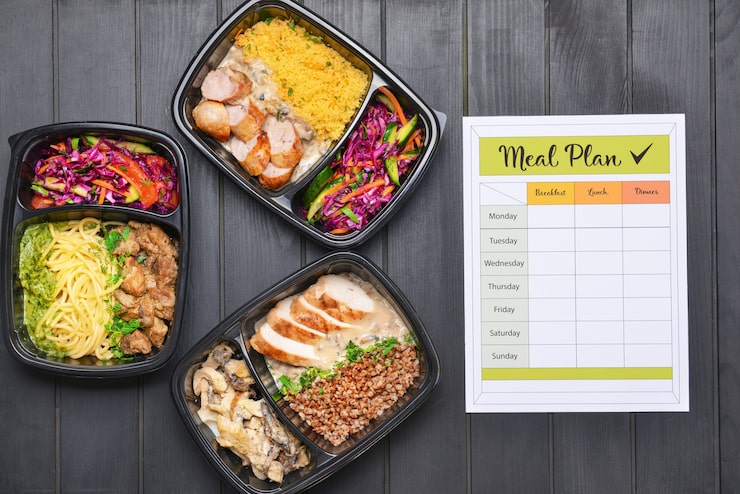Navigating college life often means juggling classes, studying, a social life, and, of course, your finances. One of the biggest expenses for any student is food. Without a solid strategy, your food costs can quickly spiral out of control. Creating a student meal plan on a budget is the key to eating well without emptying your wallet. This guide will walk you through everything you need to know to master your food budget and enjoy delicious, healthy meals.
We will cover how to plan your meals, shop smart, and use tools to make the process easier. With a little organization, you can stop stressing about money and focus on your studies. Let’s dive into how you can eat well for less.
Why Every Student Needs a Meal Plan
A meal plan is more than just a list of what you’ll eat. It’s a powerful tool for managing your time, money, and health. When you know what you’re eating for the week, you eliminate the daily stress of figuring out dinner. This saves you from last-minute, expensive takeout orders.
Planning your meals helps you stick to a budget. You buy only what you need, which significantly reduces impulse purchases at the grocery store. It also promotes healthier eating habits. By planning ahead, you can ensure your diet is balanced with nutritious foods, rather than relying on instant noodles and fast food. For students looking to take control of their spending and well-being, a well-thought-out meal plan is a game-changer.
Building Your Student Meal Plan on a Budget
Creating an effective and affordable meal plan involves a few simple steps. It’s all about being strategic and making smart choices.
1. Set a Realistic Food Budget
The first step is figuring out how much you can afford to spend on food each week or month. Look at your income from part-time jobs, student loans, or family contributions, and subtract your fixed expenses like rent and tuition. What’s left is your discretionary income. A portion of this will be your food budget. Be realistic. You want a budget that allows you to eat well without causing financial strain. Many students find that a weekly budget is easier to manage than a monthly one.
2. Plan Your Meals for the Week
Once you have your budget, it’s time for the fun part: planning your meals. Start by thinking about your schedule. On busy days with back-to-back classes, you’ll want quick and easy meals. On days with more free time, you can cook something more involved.
Make a list of breakfasts, lunches, dinners, and snacks for the entire week. A great strategy for cheap meal planning for students is to build your plan around staple ingredients. Base your meals on affordable and versatile foods like rice, pasta, beans, lentils, eggs, and seasonal vegetables. You can also look for weekly sales at your local grocery store and plan your meals around those discounted items.
3. Create a Smart Shopping List
With your meal plan in hand, create a detailed shopping list. Go through your kitchen and check what you already have. Only add items to your list that you truly need for the week’s meals. This simple habit prevents you from buying duplicates and reduces food waste.
Stick to your list when you’re at the store. Supermarkets are designed to encourage impulse buys, especially near the checkout counter. Having a list keeps you focused and on budget.
Smart Shopping Tips for Students
How you shop is just as important as what you buy. These tips will help you get the most value for your money.
Buy in Bulk (When It Makes Sense)
Non-perishable items like rice, pasta, oats, and canned beans are often cheaper when purchased in larger quantities. If you have the storage space, buying these staples in bulk can lead to significant savings over time. However, be cautious about buying perishable items in bulk unless you’re sure you can use them before they spoil.
Embrace Store Brands
Don’t overlook generic or store-brand products. In many cases, they are nearly identical in quality to their name-brand counterparts but cost much less. From cereal to canned vegetables, choosing the store brand is an easy way to lower your grocery bill.
Shop Seasonally
Fruits and vegetables are cheapest and taste best when they are in season. Check what’s currently in season in your region and build your meals around those items. You’ll find that seasonal produce is not only more affordable but also fresher and more flavorful.
Meal Prep for Students: Your Secret Weapon
Once you’ve done your shopping, it’s time for meal prep for students. This practice involves preparing your meals or ingredients in advance, saving you a ton of time during the busy week. Dedicate a few hours on a Sunday to cook large batches of grains, chop vegetables, or even assemble full meals.
You can cook a large pot of chili, a batch of soup, or grill some chicken to use in salads and sandwiches throughout the week. Store your prepped food in airtight containers in the refrigerator. When you’re hungry and short on time, you’ll have a healthy, ready-to-eat meal waiting for you. This simple routine is a cornerstone of a successful student meal plan on a budget.
Making Meals Affordable and Delicious
Eating on a budget doesn’t have to be boring. There are plenty of ways to create affordable student meals that are both tasty and satisfying.
- Protein Power: Meat can be expensive. Incorporate cheaper protein sources like eggs, beans, lentils, chickpeas, and tofu into your diet.
- One-Pot Wonders: One-pot meals like stews, curries, and pasta dishes are great for students. They require minimal equipment, are easy to make in large batches, and the cleanup is simple.
- Repurpose Leftovers: Get creative with your leftovers. Turn leftover roasted chicken into a sandwich for lunch the next day. Use leftover vegetables in an omelet or a stir-fry. This minimizes waste and stretches your food budget further.
- Embrace Spices: A well-stocked spice rack can transform simple ingredients into flavorful dishes. Spices are a cost-effective way to add variety and excitement to your meals.
Leveraging Technology for Your Meal Plan
In today’s world, there are apps for everything, and meal planning is no exception. Using an app can streamline the entire process, from finding recipes to creating shopping lists.
The Studelicious app is designed specifically with students in mind. It helps you discover budget-friendly recipes, plan your weekly meals, and automatically generate a shopping list. Studelicious takes the guesswork out of creating a student meal plan, making it easier than ever to eat well and save money. By integrating tools like this into your routine, you can make your student meal plan on a budget even more effective and manageable.
Frequently Asked Questions
How much should a student budget for food?
A typical student food budget ranges from $150 to $300 per month, depending on your location, dietary needs, and cooking habits.
What are easy meal plans for students?
Easy meal plans for students focus on simple recipes with few ingredients, like pasta dishes, rice bowls, omelets, and soups.
How to avoid food waste?
Avoid food waste by planning meals, buying only what you need, using leftovers creatively, and storing food properly.
Conclusion
Mastering your food budget as a student is an essential skill that will benefit you long after graduation. By setting a budget, planning your meals, shopping smart, and embracing meal prep, you can enjoy delicious and nutritious food without financial stress. Remember that consistency is key. Stick with your plan, and don’t be afraid to adjust it as you learn what works best for you. With these strategies, you are well-equipped to conquer your kitchen and your budget.





